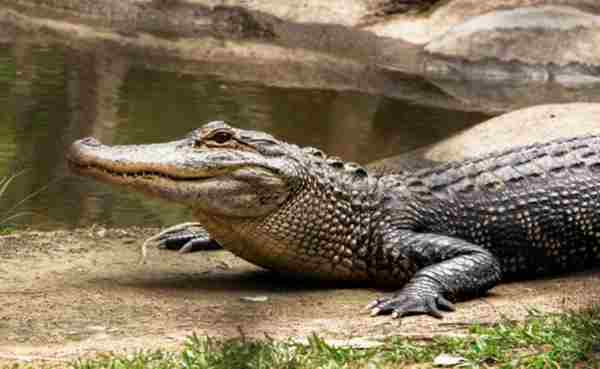While dinosaurs often steal the spotlight in the prehistoric world, they were not the sole creatures to wield terrifying power and prowess. The ancient epochs were home to a plethora of extraordinary creatures, some even more formidable and fearsome than the famed dinosaurs. In this exploration of prehistoric might, we delve into a world where ferocious predators and Animals That Were Scarier Than Dinosaurs roamed freely, showcasing an array of unique and sometimes terrifying traits.
Table of Contents
From colossal sea monsters to giant insects and massive mammals, these ancient creatures were true giants of their time, leaving an indelible mark on Earth’s history. Prepare to journey beyond the well-known dinosaurs and discover the awe-inspiring and often chilling world of animals that were undeniably scarier than their famous reptilian counterparts.
Overview of Dinosaurs and Their Popular Portrayal as Frightening Creatures:
Dinosaurs, the colossal reptiles that once roamed the Earth, have captivated human imagination for centuries. Their popular portrayal often emphasizes their fearsome aspects, accentuating their sharp teeth, immense size, and predatory nature. The image of a roaring Tyrannosaurus rex or a cunning Velociraptor has been etched into popular culture, perpetuated through movies, books, and various forms of media.
This portrayal as frightening creatures stems from their imposing features, enormous stature, and their role as top predators during the Mesozoic Era. While some dinosaurs were indeed formidable hunters, it’s essential to recognize that they were a diverse group with herbivorous species as well. Nonetheless, their portrayal as frightening beings has added a layer of intrigue and awe to our understanding of prehistoric life.
Prehistoric Marine Predators:

The ancient oceans housed a realm of terrifying creatures, perhaps even more menacing than their land-dwelling counterparts. Prehistoric marine predators included massive marine reptiles like the Mosasaurus and Pliosaurus, formidable sharks like the Megalodon, and bizarre sea scorpions like the Jaekelopterus.
These creatures ruled the seas during various prehistoric periods, showcasing an astounding array of adaptations that made them fearsome hunters of the deep. Their formidable jaws, sharp teeth, and often colossal size made them apex predators of their marine domains, striking fear into the hearts of any creature that dared to enter their territory.
Giant Arthropods:

The ancient world was home to giant arthropods, terrifyingly large compared to their modern counterparts. These included creatures like the Meganeura, an enormous dragonfly with a wingspan that could reach up to 2.5 feet, and the Arthropleura, a massive millipede-like creature measuring over 8 feet long.
These giants of the insect world roamed the Earth during the Carboniferous and Permian periods, showcasing the astonishing diversity and size that arthropods once achieved. Their size and appearance make them worthy of consideration as creatures that could rival dinosaurs in their ability to evoke fear and awe.
Ancient Megafauna:

Beyond dinosaurs, the prehistoric world boasted an array of ancient megafauna. These were massive mammals that roamed the Earth during the Pleistocene epoch. Creatures like mammoths, saber-toothed cats, giant ground sloths, and the massive short-faced bear were awe-inspiring in size and strength.
These colossal animals, often larger than their present-day counterparts, were fearsome and dominant in their habitats. Their impressive features, which included sharp tusks, powerful jaws, and immense strength, contributed to their reputation as formidable creatures of ancient times.
Modern Apex Predators:

The prehistoric world isn’t the sole domain of terrifying creatures. Even in our present era, we share the planet with apex predators that command awe and respect. Animals like the great white shark, crocodiles, lions, and tigers represent the epitome of predatory prowess.
Their sharp teeth, powerful muscles, and cunning hunting strategies place them at the top of the food chain, instilling fear and fascination in us. While not from prehistoric times, these modern apex predators are a reminder that the natural world still hosts creatures that command respect and caution.
Venomous Creatures:
Venomous creatures, both past, and present, have the capacity to incite fear due to their often lethal capabilities. Ancient venomous creatures like the extinct Titanoboa, a massive snake, and the venomous Dimetrodon, a sail-backed reptile, were potent predators in their time.
In the present, venomous snakes, spiders, scorpions, and other creatures still elicit a deep-seated fear due to the potential harm their toxins can inflict. This fear is rooted in the danger they pose to human beings, making them subjects of caution and curiosity.
Terrifying Mythical Beasts:
In the realm of mythology and folklore, terrifying creatures have been a part of human storytelling for millennia. These mythical beasts, though not real, have played a significant role in shaping cultural fears and legends.
Creatures like the hydra, a multi-headed serpent, the griffin, a creature with the body of a lion and the head of an eagle, and the kraken, a massive sea monster, have fueled imaginations and fears across different civilizations. The symbolism and stories associated with these mythical creatures often reflect deeper societal anxieties and mysteries of the unknown.
Final Words:
The awe and fear evoked by animals, both ancient and modern, have shaped human perception of the natural world. From the towering dinosaurs of the past to the formidable predators of today, the animal kingdom has always been a source of both fascination and apprehension.
Whether real or mythical, these creatures remind us of the vast diversity and power that the animal world holds, fueling our curiosity and driving us to learn more about the captivating and sometimes chilling beings that share our planet’s history and imagination.
Reference:
- https://www.fieldmuseum.org/blog/eight-most-nightmarish-prehistoric-animals
- https://explainlikeimfive.io/blog/dinosaurs-are-scary/
- https://www.wildrepublic.com/product/honey-badger
A motivated philosophy graduate and student of wildlife conservation with a deep interest in human-wildlife relationships, including wildlife communication, environmental education, and conservation anthropology. Offers strong interpersonal, research, writing, and creativity skills.










